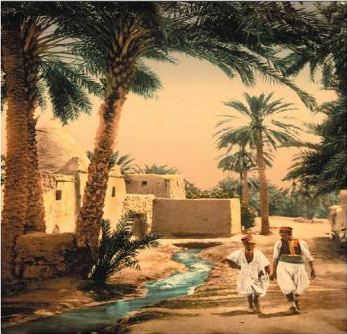“Nice and the Orient: from a transformed landscape to Orientalist architecture”, at 3 PM at the auditorium of the Matisse Museum in Cimiez, (Matisse Museum series) free entry, book signing for the work on Matisse.
The Egyptian campaigns (1798-1801), the conquest of Algeria (1830), the opening of the Suez Canal (1869), are among the historical events that laid the foundation for Orientalism, as well as the expansion of the railways and steam navigation. The Orient thus becomes an accessible world.
Nice did not wait for this new European enthusiasm for the “Orientalist obsession” to showcase its influences. From the Middle Ages to more contemporary periods, botanists, writers, painters, architects, filmmakers, and even carnival participants, of which Matisse certainly saw the floats during his winter stays, have been part of this movement.
The plant landscape: orange trees arrived in the County with the Crusaders through Bordighera at the same time as the palm trees used for the Vatican’s woven palms. In 1857, Gustave Thuret acclimatized exotic plants in Cap d’Antibes, contributing to the transformation of the plant landscape of the French Riviera.
The literary landscape followed: Apollinaire, George Sand, Alphonse Karr, Jules Romains would describe Nice as “a true Oriental setting.”
The painters of Nice were not left behind: Bonamici, Herst, Lessieux, Martin Sauvaigo, and especially Fricero and Ziem, like many others, traveled to the Orient and brought back Mediterranean lights.
Finally, architects strayed from local tradition to build “follies” like the “Château de l’Anglais”, and a proliferation of Moorish villas invaded Nice. In 1889, a fanciful Orient triumphed with the Jetée Promenade casino and its minarets, a style also seen in the Alhambra hotel that overlooks Cimiez boulevard with its minarets.
Even cinema with Rex Ingram and his film “The Garden of Allah” or the Carnival with its float on odalisques followed this trend at the beginning of the 20th century.


